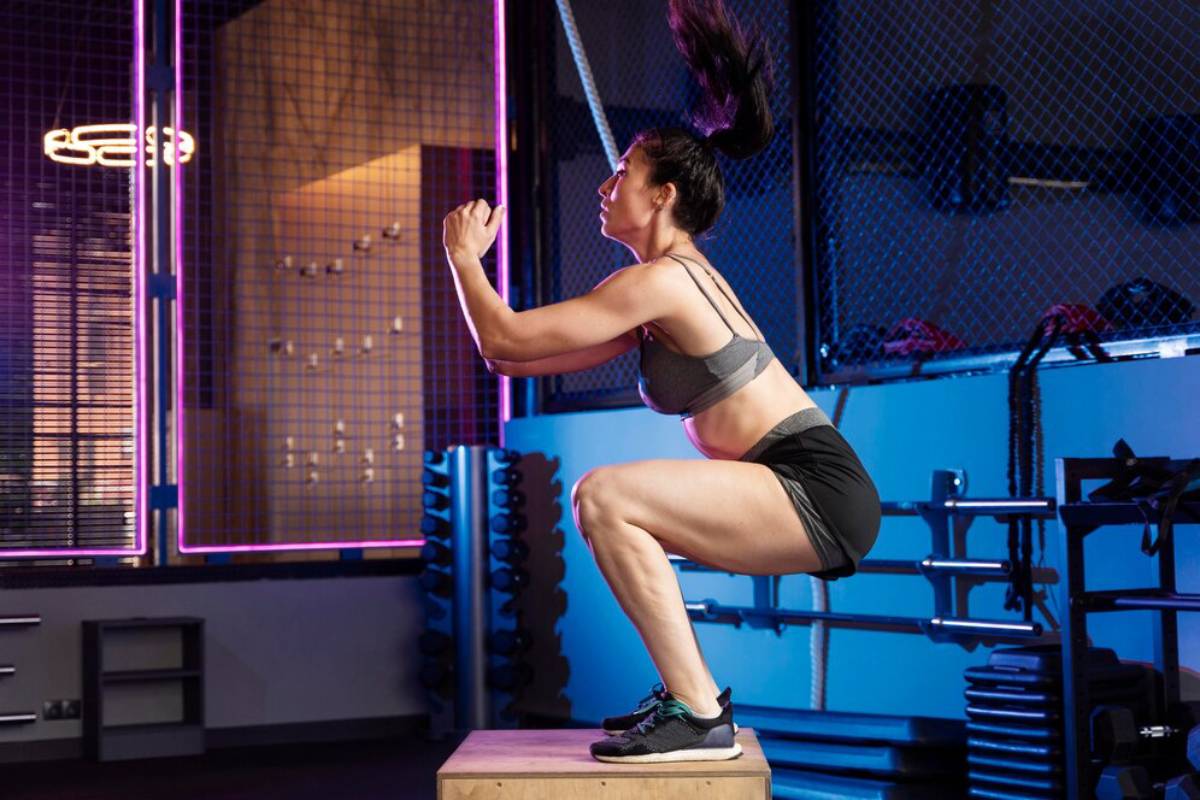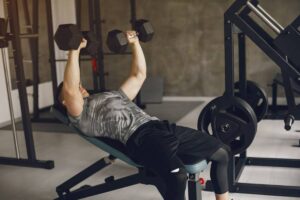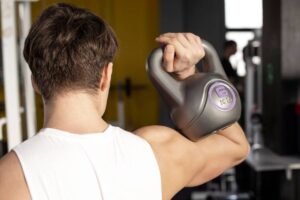The Fitness Blog

How to Perform the Perfect Squat: A Comprehensive Guide
The squat is a cornerstone of any fitness journey. It builds strength, enhances flexibility, and reshapes body composition. No matter your experience level, mastering the squat boosts your leg strength and stability. Dive into this guide for a crystal-clear look at perfecting your squat. It hones in on technique, emphasises proper form, and doubles as a complete leg workout manual.
Squats are the ultimate trifecta for your quads, hamstrings, and glutes. They also activate your core, turning them into a full-body powerhouse. Grasping squat technique is essential; it maximises benefits while minimising injury risks. This guide shares key concepts, easy steps, and expert tips for perfecting your squat.
Pro Tips: Technique triumphs over weight. Protect yourself from injury with proper form.
Quick Guide

- Step into the Right Shoes – Choose flat-soled kicks or embrace nature’s call with bare feet for unbeatable stability.
- Warm Up Your Engine – Ignite your body with dynamic stretches like leg swings and bodyweight squats.
- Feet in Position – Align your feet at shoulder-width, toes subtly turned out for balance.
- Activate Your Core – Tighten those abs; they’re your secret weapon for stability.
- Lower with Grace – Push your hips back, bend your knees, and keep your chest proud.
- Knees on the Same Team – Ensure your knees follow your toes—no collapsing allowed!
- Reach for the Depth – Descend until your thighs are parallel to the floor, or deeper if you dare!
- Drive Through Your Heels – Push up through your heels. Stand tall and proud.
- Breathe Like a Champ – Inhale deeply as you descend and exhale triumphantly on your ascent.
- Keep an Eye on Progress – Track your squats and fine-tune your technique or weight as you grow.
Important Consideration: Be mindful of your knees. They should not cave inward during squats. This can cause serious strain and injury.
Core Concept
Understanding the Importance of Squats
Squats are more than mere leg lifts; they’re everyday essentials. We squat every time we sit, stand, or hoist. Adding squats to your workout boosts functional fitness. This helps you perform daily tasks more easily and quickly. A study in the Journal of Strength and Conditioning Research shows that squats boost lower body strength and power. This enhancement translates to a leap in athletic performance.
The Science Behind Squat Technique
Mastering the art of the squat is crucial for muscle magic and injury avoidance. Fitness gurus emphasise that a stellar squat demands strength, flexibility, and stability. Remember these key principles: maintain a neutral spine, engage your core, and line up your knees with your toes.
Studies reveal that squats are a powerhouse for joint health. They enhance flexibility and expand your range of motion in the hips, knees, and ankles. Perfect for anyone aiming to amplify mobility and embrace an active lifestyle as the years go by.
Step-by-Step Guide to Performing the Perfect Squat
Preparation
- Choose the Perfect Sole: Slip into flat-soled shoes or go barefoot. This choice keeps you grounded and balanced.
- Warm-Up Wisdom: Activate your muscles and joints with a lively warm-up. Incorporate leg swings, hip circles, and bodyweight squats to get moving.
Execution
- Stand Tall: Position your feet shoulder-width apart, toes slightly out.
- Core Connection: Tighten those abs to anchor your spine firmly.
- Initiate the Movement: Start the squat by pushing your hips back. Imagine sinking into an inviting chair.
- Maintain Alignment: Keep your chest proud and back straight. Make sure your knees dance over your toes.
- Depth Matters: Lower yourself until your thighs parallel the ground. Go as deep as your flexibility allows.
- Rise and Shine: Push through your heels and stand up, engaging those glutes.
Breathing
- Inhale deeply as you lower into the squat.
- Exhale fully as you push back up to the starting position.
Best Practices & Additional Insights
- Dive into a world of squat variations—goblet, sumo, and front squats await! Each variation ignites distinct muscles, spicing up your workout routine.
- Combine squats with lunges and deadlifts for a thorough lower body bonanza.
- Monitor your progress regularly; shake things up to keep your muscles guessing!
FAQs

How often should I perform squats?
Aim for squats 2-3 times per week, allowing proper rest between sessions.
Can squats help with weight loss?
Absolutely! Squats are calorie-burning powerhouses. They build muscle, especially when combined with a balanced diet.
What if I experience knee pain during squats?
If knee pain strikes, reassess your form and reduce squat depth. Consult a healthcare professional if the pain lingers.
Are squats suitable for beginners?
Definitely! Newcomers should start with bodyweight squats. As they get stronger, they can add weights.
What are the benefits of adding weights to squats?
Weights amplify resistance, activating more muscles and boosting strength. It’s a fabulous way to up the challenge.
Conclusion: Master the Squat for Strength and Stability

Mastering the perfect squat requires practice, patience, and attention to detail. It’s a movement that goes beyond just building leg muscles—it strengthens your core, improves mobility, and enhances overall athletic performance. By focusing on proper technique, gradually increasing intensity, and listening to your body, you can unlock the full benefits of squats while reducing the risk of injury.
Incorporating squats into your fitness routine can lead to transformative changes in strength, endurance, and posture. Consistency is key—whether you’re performing bodyweight squats or lifting heavy weights, regular practice will yield noticeable improvements over time.
Embrace the challenge, stay committed to refining your technique, and enjoy the journey of getting stronger with every squat. Remember, the path to mastering squats is one of dedication and gradual progression, so stay patient and trust the process. Happy squatting!









